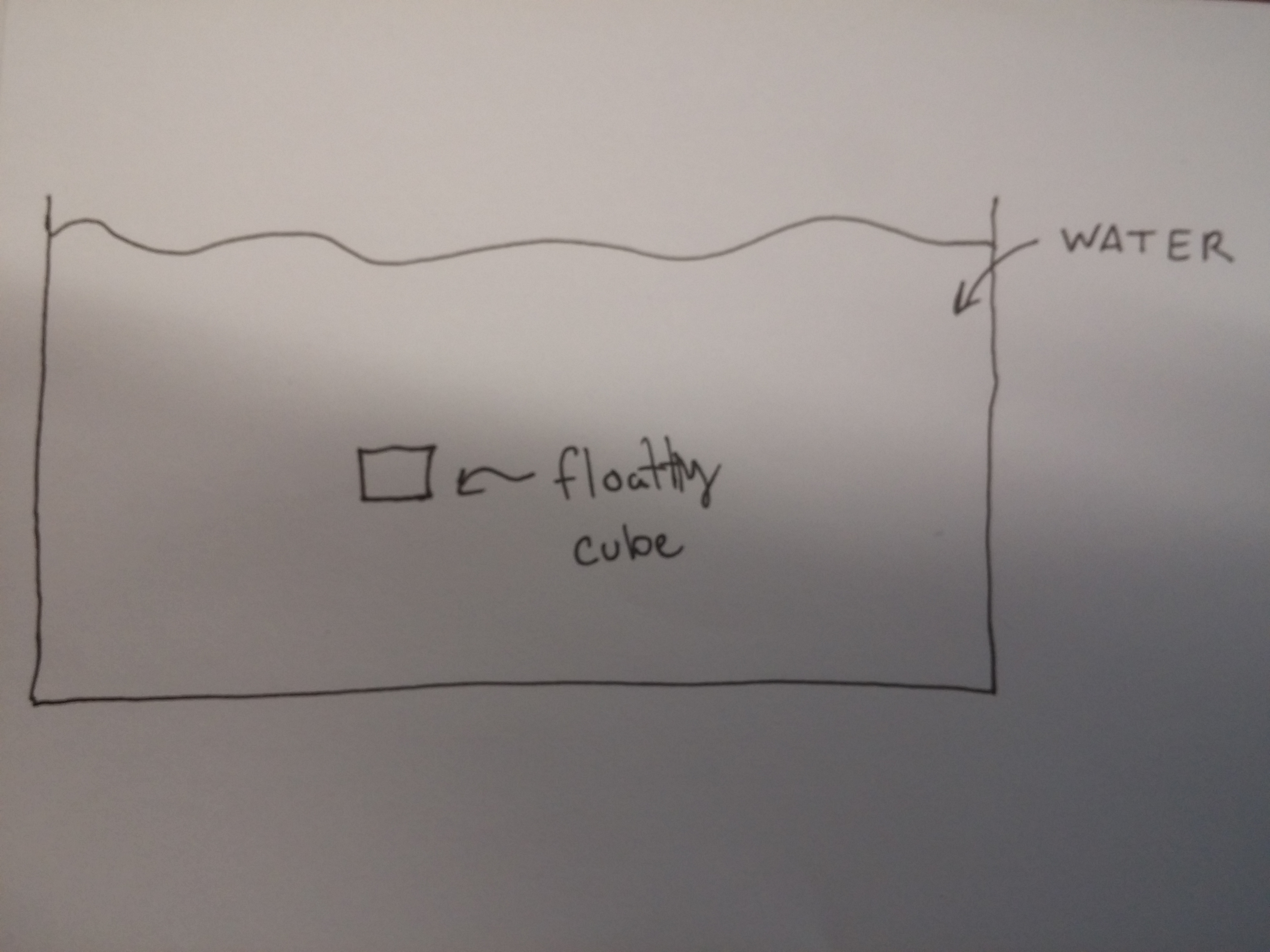Pressure and gravity: Difference between revisions
No edit summary |
No edit summary |
||
| Line 8: | Line 8: | ||
This question addresses many different concepts in physics, ranging from microscopic to macroscopic interactions. Trying to understand physical interaction at multiple scales can be difficult. | This question addresses many different concepts in physics, ranging from microscopic to macroscopic interactions. Trying to understand physical interaction at multiple scales can be difficult. | ||
First [[File: | First [[File:hydrostatic_cube.jpg]] | ||
Now lets think about all the other faces of the cube. There are still molecules colliding with each of the faces so there is still pressure every where. However, the density is the same at each of these faces, so each side has the same number of net collisions, but now there is no net force. | Now lets think about all the other faces of the cube. There are still molecules colliding with each of the faces so there is still pressure every where. However, the density is the same at each of these faces, so each side has the same number of net collisions, but now there is no net force. | ||
Revision as of 17:27, 3 October 2014
Question:
Gravity causes pressure to increase with depth in the ocean and atmosphere. If gravity only points downward, how can pressure act in any direction, and how can this be understood at the particle level? How can ocean pressure increase with depth if water is incompressible?
Answer:
This question addresses many different concepts in physics, ranging from microscopic to macroscopic interactions. Trying to understand physical interaction at multiple scales can be difficult.
Now lets think about all the other faces of the cube. There are still molecules colliding with each of the faces so there is still pressure every where. However, the density is the same at each of these faces, so each side has the same number of net collisions, but now there is no net force.
